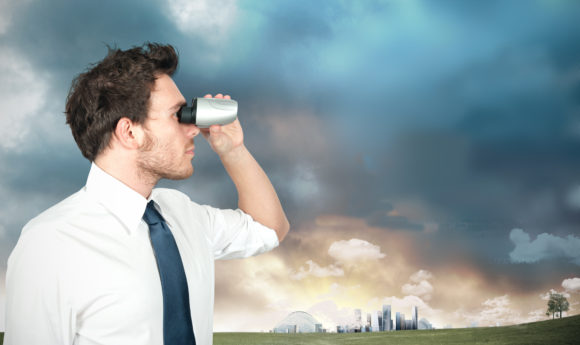For the last few years there’s been a common response from catastrophe modelers who advise the property/casualty industry when asked about including the effects of climate change in modeling.
It went something like: “The industry isn’t interested in what the weather will look like in 30, 50 or 100 years, it’s focused on what extreme weather will look like next year.”
But lately it seems that more cat modelers are being asked if they can include the effects of climate change in their models, and at least one modeling firm is now gearing up to offer just that.
Boston-based AIR Worldwide is developing better tools to help its clients understand the risks of climate change.
The firm says its scientists are collaborating with organizations like The Met Office, Geosciences Australia and the Association of British Insurers to quantify the financial impacts of climate change.
“Findings have indicated correlations between environmental factors such as sea levels and sea surface temperatures, and the intensity and frequency of natural disasters, including windstorms, floods, and coastal storm surge,” the AIR website states.
No, the P/C industry hasn’t suddenly switched its focus to what’s going to happen 30-plus years from now, said Peter Sousounis, assistant vice president and director of meteorology in AIR’s research and modeling division.
Climate change continues to occur on a relatively slow time scale — slow relative to one-year renewal periods on property — but this doesn’t mean a warming world isn’t having effects in the here-and-now. Though that is still up for debate.
Sousounis and other modelers say the industry, and particularly the public sector, is coming to them for more information on impacts from climate change — Are rising sea levels putting more properties at risk? Are droughts being made worse? Can we expect more tornadoes?
“An aspect of climate change that we don’t understand is how it’s impacting the year-to year variability,” he said.
In other words, variability over the last five-to-10 years may be much different than 50 to 60 years ago, and this is among the important questions firms like AIR and their clients want answered.
One of the questions Sousounis believes should be tackled sooner than later is how climate change will affect the variability of hurricanes and their forward wind speed.
If a hurricane’s forward speed slows, it could increase its time spent over, say, a city on the Eastern Seaboard, thereby increasing precipitation and exposure to high winds for the city’s inhabitants and all of its structures.
Just what does climate change have to do with the forward wind speed of hurricanes?
“The poles are warming at a rate that is faster than equatorial regions,” Sousounis explained.
This means the pole-to-equatorial temperature gradient is changing, and that in turn can alter the world’s atmospheric circulation.
That’s the brief version of a much longer tutorial he gave, which held that the frequency of the wave-shaped currents that circle the globe could change, slowing hurricanes down as well as creating other issues.
More severe damages from hurricanes could result, and particular regions may be more consistently exposed to the same weather — more heavy precipitation day after day in some areas, while other areas are plagued by prolonged heatwaves.
Including climate change in modeling may be easier said than done.
Multiple conditions are already factored into modeling, and the potential impacts of climate change add yet another dimension to the mix, according to Tom Larsen, a product architect for Irvine, Calif.-based CoreLogic.
Larsen kicked it into mathematical mode, as modelers often do, explaining this in terms of X and Y dimensions, plus the depth of the atmosphere, and the time element. He thankfully didn’t assign lettering to the last two dimensions, effectively dumbing things down.
“You’ve got four dimensions that you’re dealing with,” he said.
Attempting to factor in the impacts of climate change effectively doubles that.
“It’s a 16-fold increase in analytics,” he added — or rather multiplied.
This isn’t to say the task is impossible.
The academic world is increasingly developing their own models and adding to a growing set of research on climate, which AIR and other modelers can seize upon in their efforts to make better products.
If nothing else, the availability of more data is always attractive to P/C insurers, Larsen said. “The market is becoming more accepting of these models,” he said. “We are getting more requests at different levels. It’s certainly not on the top five list for many of our clients, but it is on the important list.”
Most in this field say the biggest interest in modeling for the impacts of climate change is coming from the public sector, which must think about planning on a far longer scale.
Silicon Valley-based Risk Management Solutions has already begun offering its services to the public sector. RMS recently performed a future climate modeling scenario for San Francisco, which found in May that $77 billion worth of property could be at risk of storm surge/flooding as a result of sea level rise.
Most of the climate change-related questions Steve Bowen hears from his clients relates to just how this is going to be done.
“The industry as a whole in trying to figure out how the cat modeler is going to take the whole topic of climate change and model it into their climate solutions,” said Bowen, who is a director and meteorologist at London-based Aon Benfield analytics and impact forecasting.
This may be more than mere curiosity about the future. It could be that some people in the industry think the climate change is already affecting the weather.
“The fact of the matter is we’re already seeing this impact today,” he said.
Topics Catastrophe Trends Hurricane Property Casualty Climate Change
Was this article valuable?
Here are more articles you may enjoy.



 Consumer Acceptance of Telematics Widens, Says Survey
Consumer Acceptance of Telematics Widens, Says Survey  Door of Swiss Bar Where 40 Died in Fire Was Locked, Says RTS
Door of Swiss Bar Where 40 Died in Fire Was Locked, Says RTS  Billionaire NFL Owner Suing Over Billboards Near His LA Stadium
Billionaire NFL Owner Suing Over Billboards Near His LA Stadium  Supreme Court Rejects Challenge to $2.46B Boy Scouts Sex Abuse Settlement
Supreme Court Rejects Challenge to $2.46B Boy Scouts Sex Abuse Settlement 


